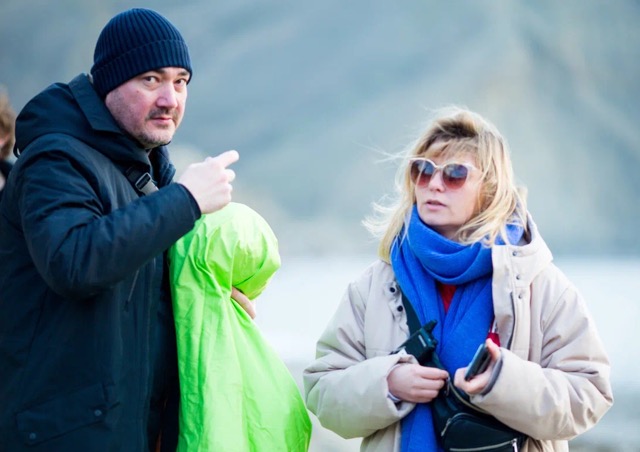The art of storytelling has changed immeasurably since the days of campfires, most notably in the way that modern filmmakers are able to create visuals that the human mind only hoped to glimpse before technology made imagination so possible. Ayrat Islamov lives in this space where imagination becomes visual perception. Sometimes the tasks he undertakes are those that create spectacles but more often they are the ones which allow audiences to immerse themselves in a reality that simply would not exist without Ayrat’s masterful skill. His resume is populated with productions boasting the most prestigious awards in Russian film and television such as the Golden Eagle Award (for the TV series Call DiCaprio!), the Nika Award (Winner of Best Visual Effects for 2017’s Spacewalk), an MTV Russia Movie Award (Happy Together-winner for Best Series), and countless others. As GC supervisor on the biggest grossing Russian film of all time (Son of a Rich), Ayrat established himself as one of the premier in his field and a major asset to any production he takes on. Pursuing his many interest has led to his great insight as he explains, “My path to cinema was not straightforward. I was a clip maker, editing director, motion designer, art director. This path was full of discoveries, gaining tremendous experience in related professions and understanding all stages of computer graphics production. It helps me a lot now, doing computer graphics for cinema. Each new task requires new ways to solve them – there is development and self-learning. Image and technology – what could be more interesting!?”

The creativity-meets-problem solving demands of his work is what Islamov credits for his continual inspiration and the longevity of his career. Ayrat points to his role on the TV Mini Series The Road to Calvary (Golden Eagle Award Winner and APKIT Award Winner- including Best Television Mini Series) as an example of this. This World War I drama takes place in St. Petersburg and required the historical aesthetics one might expect but most often, Ayrat used his skill to aid the production with problems that occurred during filming. When night shoots under cloudy skies were an impediment and practical effects malfunctioned, Islamov changed the time of day to dawn and inserted gunfire, etc. to create a very memorable train robbery scene. But Islamov’s contributions to this award-winning series are perhaps most impressive in his design and creation of the mesmerizing introductory credits. He explains, “The trick about opening credits is that they have to really grab your interest but they cannot give away too much about the plot. It was a requirement that the credits used frames from the series. The credits had to be exactly sixty seconds long. After watching a montage of the series, I immediately had an idea. I realized that the basis should be a book with video frames on the pages, which freezes and turns into a picture, an illustration in a book. But what image should the image turn into? Just in a freeze frame – that’s uninteresting and banal, but what if the image from the series would be turned into a book illustration in the form of a pencil drawing and engraving? This seemed like an interesting solution.” Striving for the most complementary and interesting solution like this is what all artists yearn for. These credit scenes are a work of illustrative art at its finest.
Ayrat had a massive impact on the central theme of the popular comedy Gusar that mixes time travel, marital strife, and history. The creators of the show were adamant that the time machine in Gusar possessed its own unique aesthetics in regards to both appearance and movement. Wind cannons, mammoth fans, debris, and stroboscopes were the first stage of creating this on set. Islamov augmented this in post and informs, “After editing the episodes, I sat down and started creating a whirlwind concept. Inside the vortex, I made particles moving in a circle. I made the epicentre of the vortex by distorting and deforming space. Simultaneously to the captured flashes from strobe lights, I added computer lightning discharges.” More displays of Ayrat’s work can be seen in the connection between the Gusar (something akin to a Russian musketeer) and his descendant Catherine. When the Gusar was in danger, parts of Catherine’s body would disappear; a sign of the hereditary connection between the two. This hereditary jeopardy was also manifested for the series by Islamov’s creativity and skill.
Splitting his time between working on the comedy TV series Non-personal life and the Musical Feature Film The March of the Dawn, Ayrat is pleased to soon be presenting a Masterclass for students of Russian Cinema at the University of North Carolina at Charlotte. Having experienced a transformation in his life that has taken his ideas to audiences everywhere, Ayrat professes, “Working is what I love and I want to pass on the passion and joy of what I do to the next generation who will follow. I really hope to get students interested in the magic of computer graphics and that after our meetings, at least one student decides to become a computer graphics specialist.”

Thomas Jackson is a dynamic and talented content writer at WonderWorldSpace.com, renowned for his engaging and informative articles. Beyond his professional pursuits in writing, Jack is also known for his deep passion for fitness, which not only shapes his lifestyle but also influences his work.


